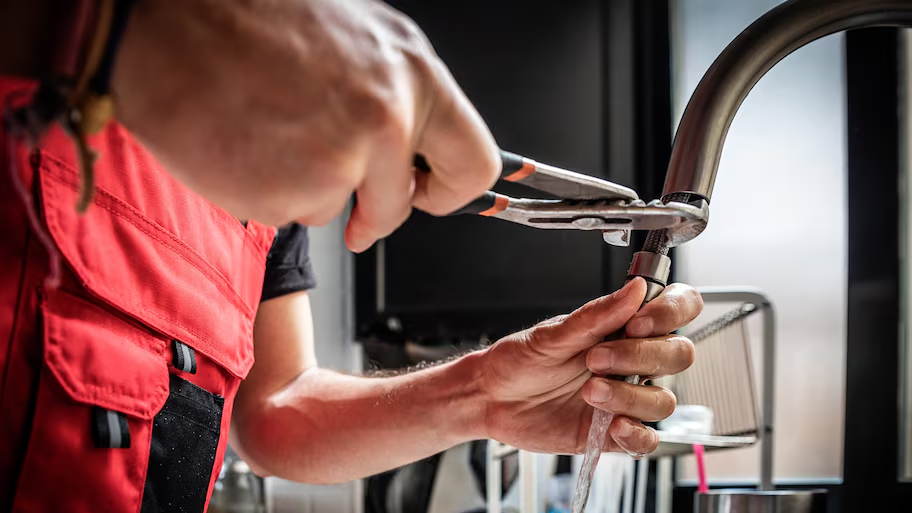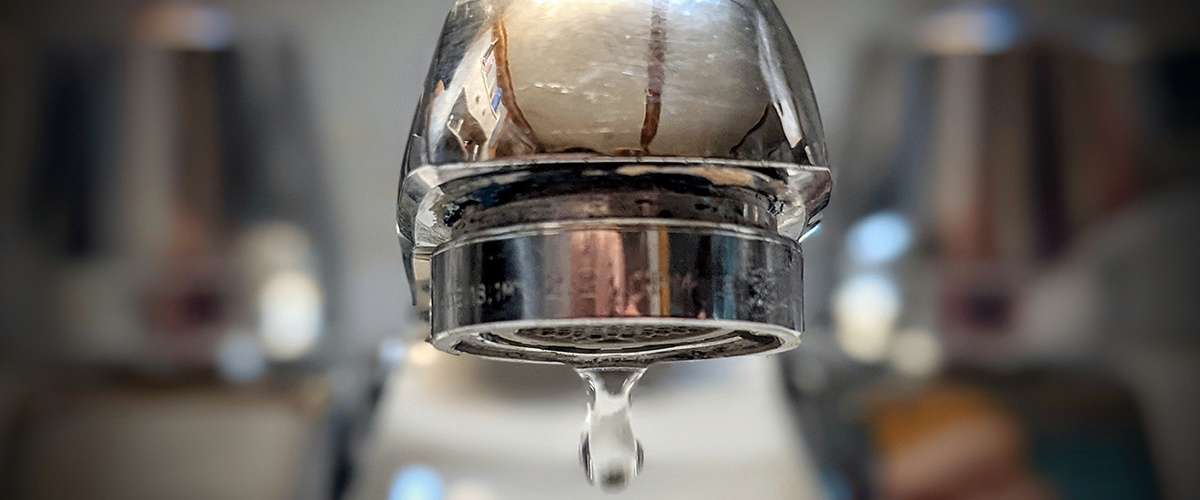The Value of Dealing with a Malfunctioning Faucet
The Value of Dealing with a Malfunctioning Faucet
Blog Article
This article underneath pertaining to Should I Repair or Replace a Leaky Faucet? is pretty much stimulating. Try it and draw your own findings.

Leaking taps could seem like a small aggravation, yet their effect exceeds simply the inconvenience of the noise. From drainage to incurring unneeded economic expenses and health and wellness dangers, neglecting a dripping tap can cause different repercussions. In this article, we'll look into why it's critical to address this common house concern immediately and efficiently.
Wastage of Water
Ecological Impact
Leaking taps contribute dramatically to water waste. According to the Epa (EPA), a solitary faucet leaking at one drip per secondly can waste greater than 3,000 gallons of water per year. This not only stress water sources yet also affects environments and wild animals depending on them.
Financial Costs
Increased Water Bills
Beyond the environmental impact, leaking taps can inflate water expenses significantly. The gathered wastefulness with time translates into higher utility costs, which might have been stayed clear of with prompt fixings.
Prospective Building Damage
Additionally, long term dripping can bring about damage to components and surface areas bordering the faucet. Water accumulation can trigger discoloration, corrosion, and even structural issues if left neglected, leading to additional fixing prices.
Health and wellness Issues
Mold And Mildew and Mold Growth
The continuous existence of wetness from a leaking tap creates a suitable atmosphere for mold and mildew growth. These fungis not only endanger interior air top quality yet additionally posture health dangers, particularly for people with breathing problems or allergic reactions.
Waterborne Diseases
Stagnant water in leaking taps can come to be a breeding ground for germs and various other virus, raising the risk of waterborne diseases. Contaminants such as Legionella germs flourish in stagnant water, potentially causing significant diseases when ingested or inhaled.
DIY vs. Specialist Fixing
Pros and Cons of Do It Yourself Fixing
While some might attempt to repair a dripping tap themselves, do it yourself repair work include their own collection of obstacles. Without appropriate knowledge and devices, DIY efforts can worsen the issue or bring about incomplete repairs, extending the issue.
Benefits of Working With a Specialist Plumber
Employing an expert plumber makes sure that the underlying source of the trickling faucet is addressed efficiently. Plumbers possess the experience and equipment to diagnose and repair tap concerns successfully, conserving time and decreasing the threat of more damages.
Step-by-Step Guide to Taking Care Of a Dripping Tap
Tools Needed
Before attempting to deal with a trickling tap, collect the needed devices, including an adjustable wrench, screwdrivers, replacement parts (such as washers or cartridges), and plumber's tape.
Usual Tap Issues and Their Solutions
Identify the type of tap and the details concern creating the drip. Common troubles consist of damaged washers, rusty valve seats, or defective O-rings. Refer to producer directions or on the internet tutorials for step-by-step guidance on repair work.
Preventive Measures
Normal Upkeep Tips
To stop trickling taps, perform regular upkeep such as cleaning aerators, checking for leakages, and changing damaged components promptly. Additionally, think about installing water-saving devices or updating to a lot more reliable fixtures.
Importance of Prompt Services
Dealing with trickling faucets as quickly as they're observed avoids additional water wastage and possible damages, inevitably saving both water and money over time.
Effect On Residential Or Commercial Property Worth
Perception of Well-Maintained Home
Preserving a property in good condition, consisting of addressing upkeep problems like leaking faucets, boosts its viewed value and desirability among potential customers or renters.
Influence on Resale Worth
Characteristics with well-maintained plumbing fixtures, consisting of taps, command higher resale worths in the real estate market. Resolving leaking taps can contribute to a favorable impression throughout property assessments and negotiations.
Environmental Duty
Individual Contribution to Preservation
Taking duty for repairing leaking taps straightens with broader efforts towards water conservation and environmental sustainability. Every individual's actions collectively make a considerable influence on maintaining priceless sources.
Lasting Living Practices
By focusing on punctual repair work and adopting water-saving practices, individuals contribute to lasting living techniques that profit both existing and future generations.
Final thought
Dealing with a dripping faucet surpasses simple comfort; it's a vital action toward conserving water, lowering monetary costs, and guarding health and wellness and home. Whether through do it yourself repair work or specialist support, doing something about it to take care of trickling faucets is a small yet impactful means to promote accountable stewardship of sources and contribute to a much healthier, more sustainable future.
Most Common Reasons for a Leaky Faucet and How to Stop the Drip
Whether it’s your kitchen faucet leaking or a bathroom faucet leaking, one leaky faucet can waste anywhere from three to 30 gallons of water every single day. If the constant drip-drip-drip doesn’t get your attention, your water bill will. The good news is that, by following a few simple steps, chances are pretty good you can fix the problem yourself.
Why is it dripping?
Before you start taking things apart, let’s break down some of the most common causes of a leaky faucet.
Bad O-ring.
A cartridge is a valve that controls the flow of water into the faucet spout. On cartridge faucets there’s an O-ring—the little disc attached to the stem screw that holds the faucet handle in place. If it’s loose or worn-out, it can cause your sink handle to leak. Of course, the cartridge itself could be worn out. If that’s the case, make sure you replace it with the exact same kind.
Corroded valve seat.
The valve seat connects the faucet and the spout. If the leak seems to be coming from the spout, it might be because a buildup of water sediment has corroded the valve seat.
Worn-out washers or seals.
A leaky spout could be caused by a bad washer that rests against the valve seat. It’s just a matter of time before friction takes its toll. It could also be the wrong size washer or one that’s been installed incorrectly. Water sediments can also corrode inlet and outlet seals.
Water pressure.
If the faucet only drips now and then, or when you turn the handles a certain way, you should probably check your home’s water pressure.
Loose or broken parts.
The adjusting ring and packing nuts in the stream screw can become loose over time, causing your sink handle to leak. Try tightening or replacing the packing nut. If the leak is coming from the pipes underneath the sink, you probably have a broken pipe or fitting. If that’s the case, you should definitely call a plumber.
Know your faucet.
Faucets come in a variety of types. Each one has its own assembly—and its own possible causes of leaks. Learning about the four most common kinds of faucets will help you know how to take them apart and make any repairs.
How to stop a leaky faucet
Fixing that leaky faucet doesn’t have to take a lot of time, money, or expertise. It’s usually a simple matter of replacing a worn-out washer or gasket, a loose O ring, or another part. Chances are really good you can do this yourself if you follow these simple steps.
Shut off the water.
Before you tackle the faucet, cut off the water supply to the sink. There should be one valve for hot and one for cold. Hand-turn them clockwise with your hands till they close. If there are no valves under the sink, head to the basement and shut off the main water supply to the house. Then turn on the faucet until it empties out the water that’s still in the line and you’re ready to start. It’s a good idea to cover the sink drain with a plug or a rag so you don’t lose any small pieces and parts while you’re working.

Hopefully you enjoyed reading our excerpt about 4 Common Reasons for a Leaky Faucet. Thank you for spending some time to read through our piece of content. Sharing is nice. You won't know, you may very well be doing someone a favor. Bless you for being here. Please come by our blog back soon.
Report this page